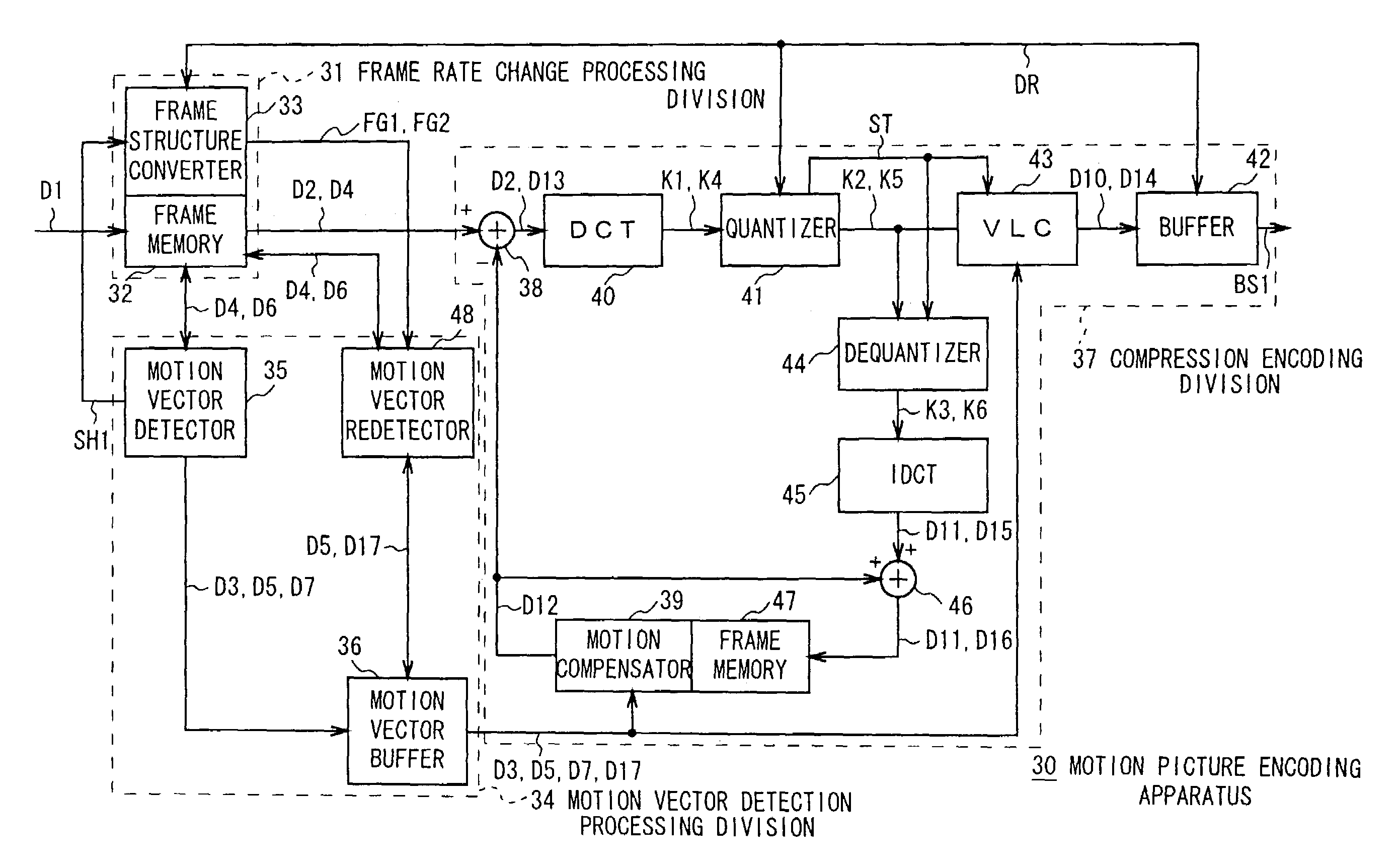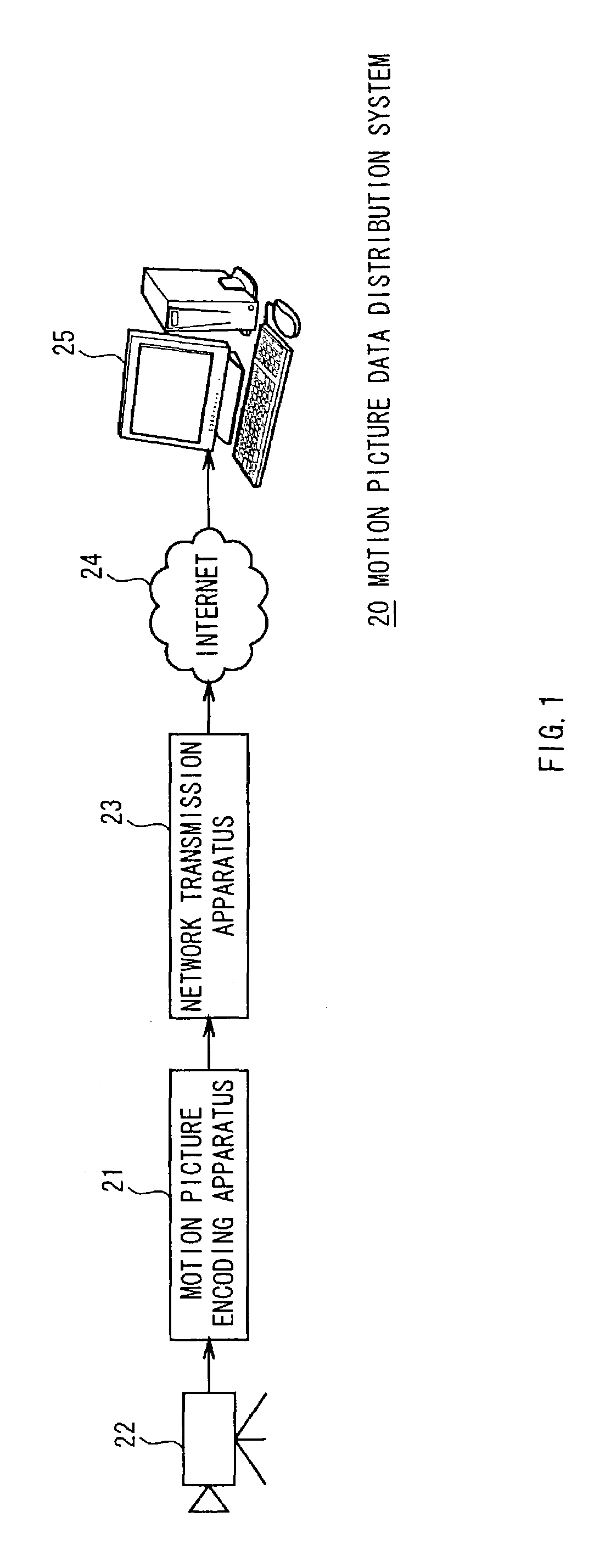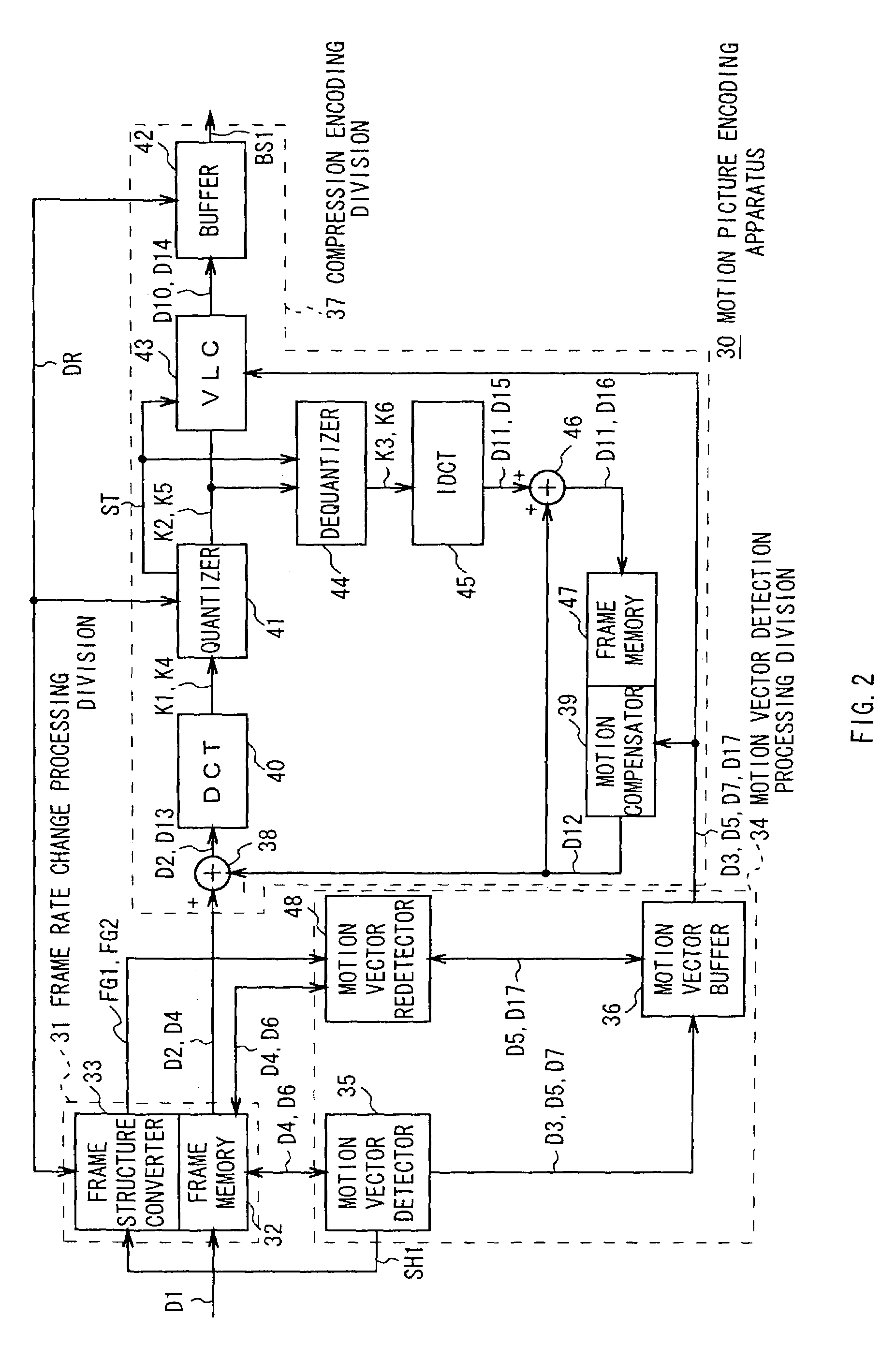Motion picture encoding apparatus
a motion picture and encoding technology, applied in the field of motion picture encoding apparatus, can solve the problems of increasing the amount of operation for detecting the motion vector, changing the compression accordingly, and changing the image quality of the motion picture provided to the user
- Summary
- Abstract
- Description
- Claims
- Application Information
AI Technical Summary
Benefits of technology
Problems solved by technology
Method used
Image
Examples
first embodiment
(2) FIRST EMBODIMENT
[0118]In FIG. 2, reference numeral 30 denotes the motion picture encoding apparatus according to the first embodiment as a whole, where motion picture data D1 supplied from an external video camera (not shown) shooting an object (not shown) is sequentially captured on a frame image data basis into a frame memory for inputting 32 having recording capacity of a plurality of frames, provided in a frame rate change processing division 31.
[0119]In this case, as shown in FIG. 3, every time the frame image data is captured into the frame memory for inputting 32, a frame structure converter 33 of the frame rate change processing division 31 assigns picture types such as an I-picture and a P-picture to the captured frame image data in an order wherein one I-picture and a predetermined number of P-pictures are sequentially and alternately successive, and also records in the frame memory for inputting 32 the picture types representing the I-picture and the P-picture and fra...
second embodiment
(3) SECOND EMBODIMENT
[0242]FIG. 10 in which the same reference numerals are applied to parts corresponding to those in FIG. 2 shows a motion picture encoding apparatus 60 according to a second embodiment, which is constructed in the same way as the motion picture encoding apparatus 30 according to the first embodiment, except the constructions of a frame structure converter 62 of a frame rate change processing division 61 and a motion vector detection processing division 63.
[0243]As in the case mentioned above about FIG. 3, every time the frame image data is captured into the frame memory for inputting 32, the frame structure converter 62 of the frame rate change processing division 61 assigns the picture types, the I-picture and the P-picture, to the captured frame image data and also records in the frame memory for inputting 32 the picture types each representing the I-picture or the P-picture and the frame identification information unique to the frame image data to which the pic...
third embodiment
(4) THIRD EMBODIMENT
[0311]FIG. 15 in which the same reference numerals are applied to parts corresponding to those in FIG. 10 shows a motion picture encoding apparatus 70 according to a third embodiment, which has the same construction as the motion picture encoding apparatus 60 according to the second embodiment, except the constructions of a motion vector detection processing division 71, a compression encoding division 72 and a mask image processing division 73.
[0312]In the motion vector detection processing division 71, when the I-picture is assigned to the leading frame image data constituting the motion picture data D1 in the frame memory for inputting 32, a simple motion vector detector 74 reads the picture information on the first frame image data to which the I-picture is assigned and thereby generates the predictive mode data D3 based on the picture information, and then sends the generated predictive mode data D3 to a simple motion vector buffer 75 to accumulate it therei...
PUM
 Login to View More
Login to View More Abstract
Description
Claims
Application Information
 Login to View More
Login to View More - R&D
- Intellectual Property
- Life Sciences
- Materials
- Tech Scout
- Unparalleled Data Quality
- Higher Quality Content
- 60% Fewer Hallucinations
Browse by: Latest US Patents, China's latest patents, Technical Efficacy Thesaurus, Application Domain, Technology Topic, Popular Technical Reports.
© 2025 PatSnap. All rights reserved.Legal|Privacy policy|Modern Slavery Act Transparency Statement|Sitemap|About US| Contact US: help@patsnap.com



